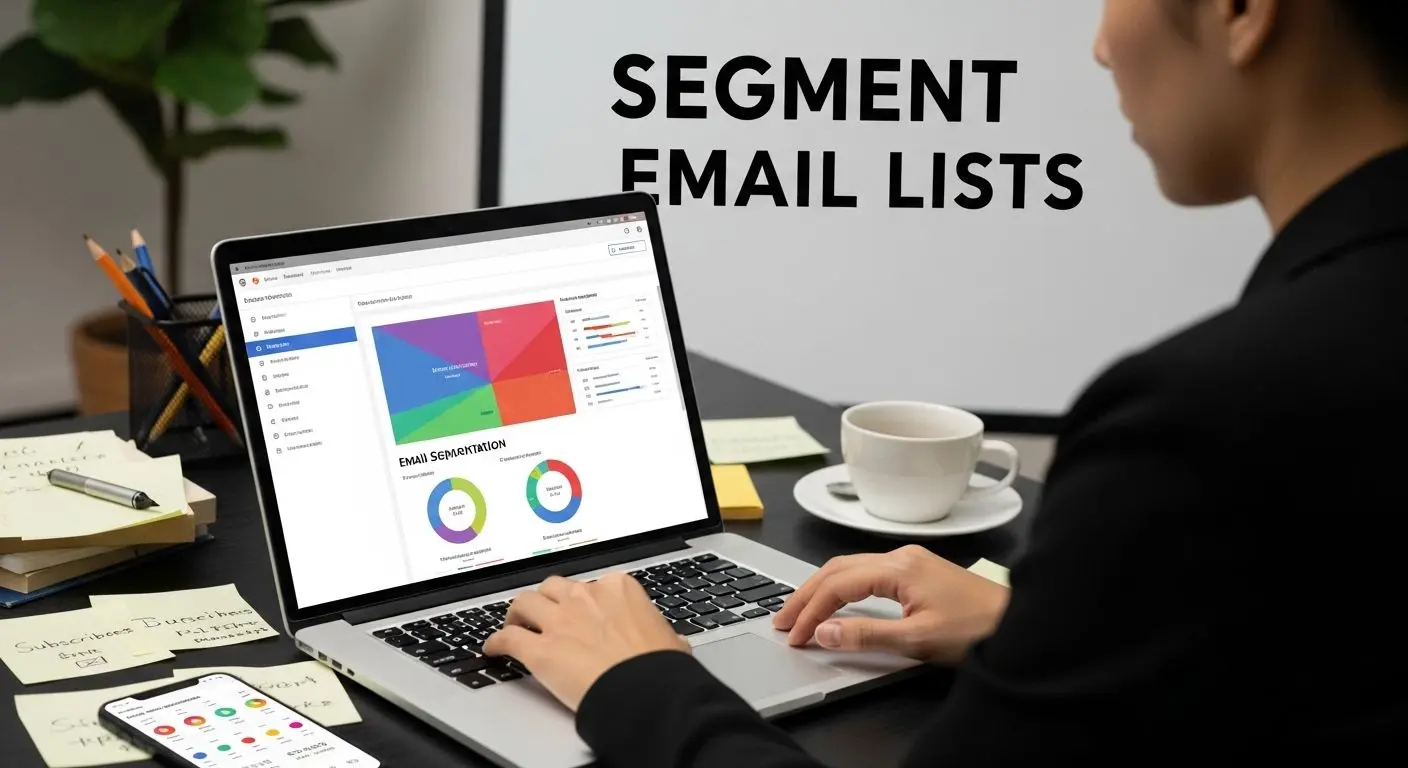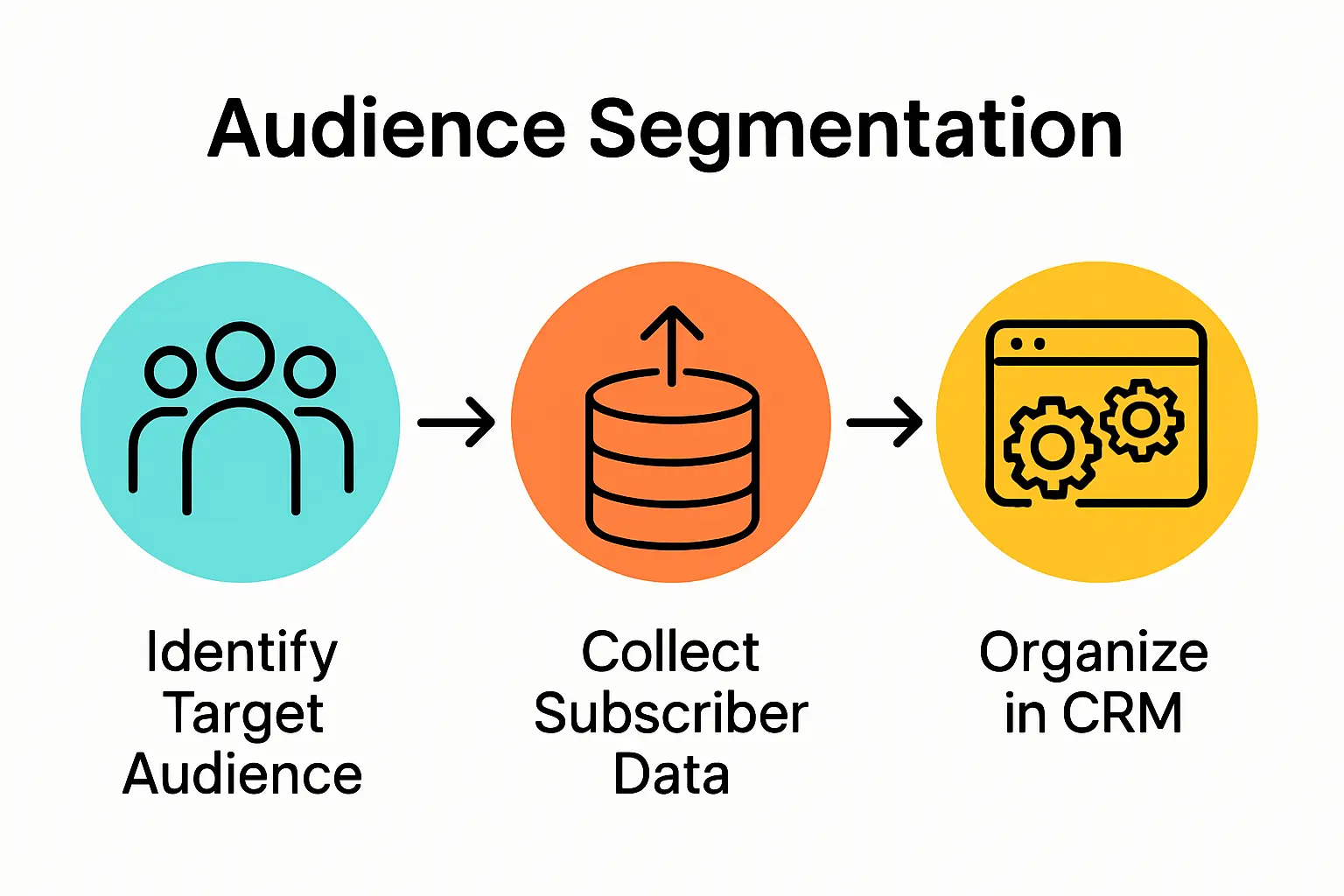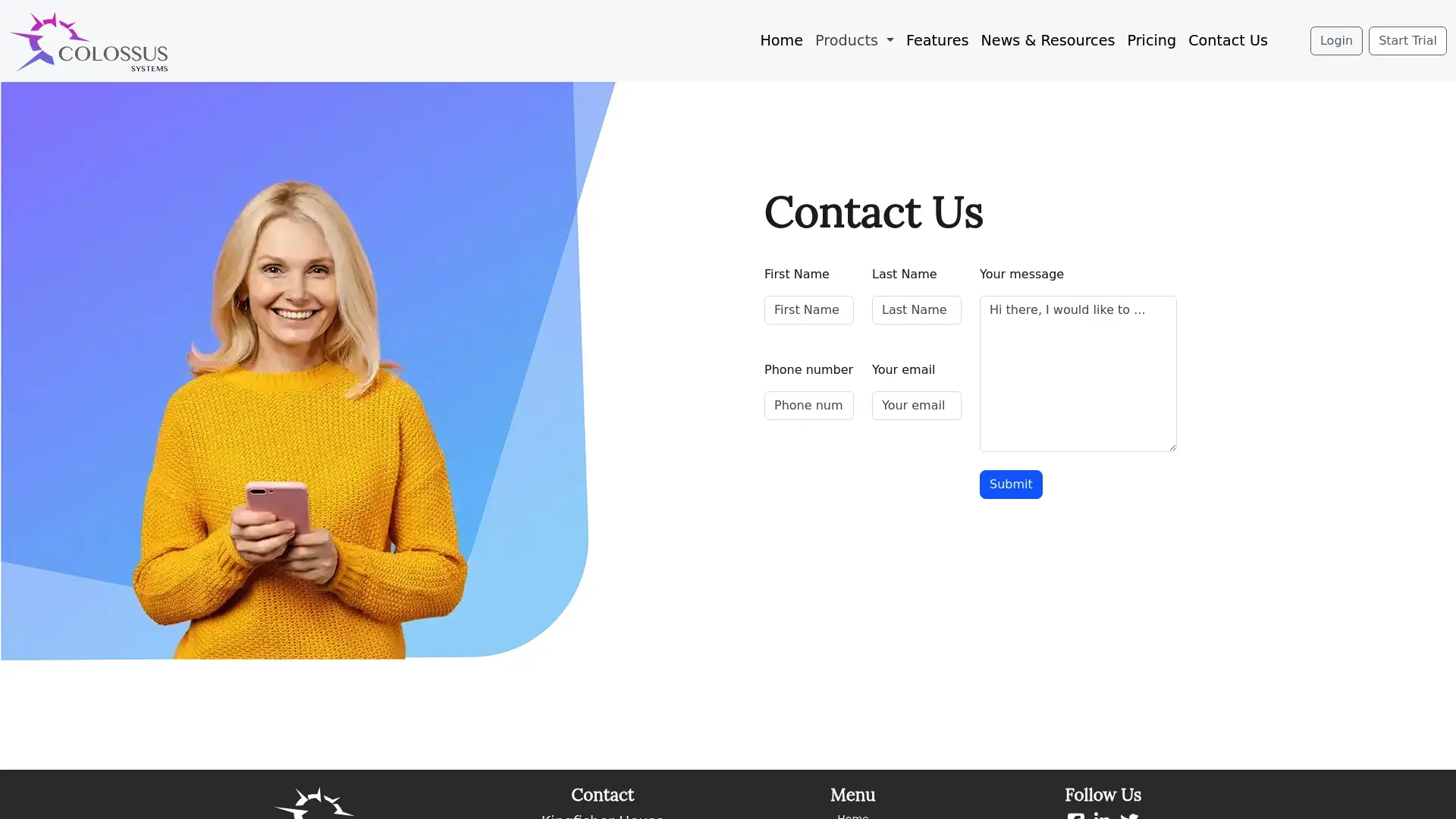How to Segment Email Lists for Effective Targeting

Email list segmentation can make the difference between campaigns that get ignored and those that spark real connections. Surprising as it may sound, segmented emails consistently outperform non-segmented ones, with open rates and click throughs soaring by as much as 30 percent. The real secret is that most organisations never tap into the full power of segmentation, leaving heaps of subscriber insight unused. That gives you a golden chance to stand out with messages that genuinely land.
Table of Contents
- Step 1: Define Your Target Audience
- Step 2: Gather and Organise Subscriber Data
- Step 3: Identify Segmentation Criteria
- Step 4: Create Segments Based on Criteria
- Step 5: Test Your Segments for Effectiveness
- Step 6: Monitor and Adjust Your Segmentation Strategy
Quick Summary
| Key Point | Explanation |
|---|---|
| 1. Identify Your Target Audience First | Understand the demographics and behaviours of your subscribers to customise communication effectively. |
| 2. Organise Subscriber Data Effectively | Centralise and standardise subscriber information in a CRM for better segmentation capabilities. |
| 3. Create Actionable Segments | Use defined criteria to develop meaningful segments that facilitate tailored messaging and engagement. |
| 4. Test Segments for Performance | Implement A/B testing to measure the effectiveness of your segments and adjust strategies based on results. |
| 5. Continuously Monitor and Adjust | Regularly assess segment performance and make data-driven adjustments to remain responsive to subscriber needs. |
Step 1: Define Your Target Audience
Determining your target audience is the foundational step in creating an effective email segmentation strategy. This crucial initial phase sets the stage for precision marketing by helping you understand who your subscribers truly are and what specific communications will resonate most with them.
Begin by conducting a comprehensive analysis of your existing subscriber database. Review demographic information such as age, professional role, geographical location, and past interaction history with your organisation. The goal is to develop nuanced audience personas that go beyond surface level characteristics and capture meaningful insights about subscriber preferences and behaviours.
Utilise customer relationship management (CRM) tools and email analytics to collect detailed data points. According to Washington State University Extension, effective audience segmentation allows organisations to customise information delivery according to specific subscriber interests. Look for patterns in subscriber engagement such as:
- Email open rates
- Click through frequencies
- Content interaction preferences
- Purchase or membership history
Do not rely solely on quantitative metrics. Supplement your data analysis with qualitative research methods like surveys, direct feedback, and customer interviews. These approaches provide deeper contextual understanding about your audience’s motivations, challenges, and communication preferences.
Successful audience definition requires an iterative approach. Regularly review and refine your audience segments as subscriber behaviours and organisational goals shift.
Below is a summary table outlining the main steps involved in segmenting your email list for effective targeting, along with the aim of each stage.
| Step | Description | Key Outcome |
|---|---|---|
| 1. Define Target Audience | Analyse your subscribers to determine their demographics, preferences, and behaviours. | Identify distinct audience personas for tailored messaging. |
| 2. Gather & Organise Data | Consolidate and standardise subscriber information in a CRM system. | Structured data set ready for segmentation. |
| 3. Identify Segmentation Criteria | Determine specific categories such as demographics, behaviour, and interests to segment the list. | Robust, actionable segmentation framework. |
| 4. Create Segments | Implement segmentation using CRM tools based on chosen criteria. | Well-defined subscriber groups for targeted campaigns. |
| 5. Test Segments | Use A/B testing to measure segment performance and effectiveness. | Data to inform adjustments for higher engagement. |
| 6. Monitor & Adjust Strategy | Track ongoing results and refine segmentation as needed. | Adapted approach aligned with evolving subscriber needs. |
Step 2: Gather and Organise Subscriber Data
After identifying your target audience, the next critical step is collecting and systematically organizing subscriber data to enable precise email list segmentation. This process transforms raw contact information into a strategic asset that powers intelligent marketing communications.
Start by consolidating subscriber data from multiple touchpoints including website sign ups, event registrations, purchase histories, and existing email management platforms. Centralize this information in a robust customer relationship management (CRM) system that allows comprehensive data integration and analysis. According to Research on Marketing Analytics, effective data organization enables more sophisticated marketing strategies through advanced segmentation techniques.
Implement a standardized data collection approach that captures key demographic and behavioural metrics. Critical data points should include:
- Contact details (name, email, location)
- Engagement history
- Membership or purchase status
- Professional role or industry
- Communication preferences
Ensure data privacy and compliance with regulations like GDPR by obtaining explicit consent for data storage and usage. Implement secure data management protocols that allow subscribers to update or remove their information easily. Learn more about crafting effective communication strategies that respect subscriber preferences.
Regularly audit and clean your database to remove inactive or invalid email addresses. This maintenance prevents skewed analytics and improves overall email campaign performance.
 Develop a systematic process for periodic data review, ensuring your subscriber segments remain accurate and relevant to your organization’s current marketing objectives.
Develop a systematic process for periodic data review, ensuring your subscriber segments remain accurate and relevant to your organization’s current marketing objectives.
Step 3: Identify Segmentation Criteria
Identifying the right segmentation criteria transforms your email list from a generic collection of contacts into a strategic communication tool. This critical step determines how precisely you can tailor your messaging to resonate with specific subscriber groups.
Start by examining the unique characteristics and behaviours within your subscriber database. Effective segmentation requires a multi dimensional approach that goes beyond simple demographic categorization. According to Marketing Automation Research, successful email campaigns leverage a combination of nuanced criteria to create meaningful subscriber groups.
Consider developing segments based on these comprehensive categories:
- Demographic characteristics (age, profession, location)
- Behavioural patterns (purchase history, engagement levels)
- Interaction frequency with previous communications
- Specific interests or preferences
- Customer lifecycle stage
Analyse your existing data to uncover natural groupings within your subscriber base. Pay special attention to patterns that indicate distinct communication needs. For instance, new subscribers might require different onboarding content compared to long term members, while professionals in different industries may respond to varied messaging styles.
Explore advanced communication strategies to refine your segmentation approach. The key is creating segments that are specific enough to be meaningful but not so narrow that they become unmanageable.
The table below details common types of segmentation criteria, with definitions and brief examples, to help you identify the most suitable approach for your organisation.
| Segmentation Criterion | Description | Example |
|---|---|---|
| Demographic | Segmenting based on traits like age, profession, or location. | Professionals aged 25-40 in London. |
| Behavioural | Grouping by actions such as purchase history or email engagement. | Repeated buyers, highly engaged openers. |
| Interaction Frequency | Dividing by how often subscribers interact with your emails. | Daily readers vs. sporadic openers. |
| Interests/Preferences | Segmenting by stated or observed content preferences. | Subscribers interested in event updates. |
| Lifecycle Stage | Categorising based on their customer journey stage. | New sign-ups vs. loyal members. |
Step 4: Create Segments Based on Criteria
With your segmentation criteria identified, the next crucial step is translating these insights into actionable email list segments. This process transforms theoretical understanding into practical communication strategies that enable precise targeting and enhanced subscriber engagement.
Leverage your customer relationship management (CRM) platform to implement your segmentation strategy. Begin by setting up distinct segment groups that reflect the nuanced criteria you previously established. Use automated filtering tools to categorize subscribers based on specific characteristics such as demographic information, behavioural patterns, and interaction history.
Consider creating segments that capture meaningful subscriber variations:
- Recent purchasers versus long term customers
- Engagement levels (high, moderate, low)
- Professional industry or role categories
- Geographic regions with distinct communication needs
- Subscriber acquisition channels
Each segment should represent a distinct group with shared characteristics that warrant tailored communication approaches. Pay close attention to the granularity of your segments. Overly narrow segments can become unmanageable, while excessively broad segments diminish the potential for personalisation. Learn more about crafting precise communication strategies to refine your approach.
Verify the integrity of your segments by conducting small test campaigns. Monitor key performance indicators like open rates, click through rates, and conversion metrics to validate the effectiveness of your segmentation strategy. Remember that segmentation is an iterative process requiring continuous refinement and adaptation to changing subscriber behaviors and organisational objectives.

Step 5: Test Your Segments for Effectiveness
Testing your email list segments is a critical validation step that transforms theoretical segmentation into measurable marketing performance. This phase determines whether your carefully crafted segments genuinely improve communication effectiveness and subscriber engagement.
Implement a systematic A/B testing approach to evaluate segment performance. According to Public Library of Science Research, segmented emails consistently outperform non segmented communications, but the nuances matter significantly. Start by designing controlled experiments that test different variables across your newly created segments.
Key metrics to track during segment testing include:
- Open rates
- Click through rates
- Conversion percentages
- Unsubscribe rates
- Overall engagement duration
Begin with small test groups representing each segment, sending slightly varied content to identify which messaging resonates most effectively. Use statistical analysis to determine whether differences in performance are significant or merely coincidental. Discover advanced communication optimization techniques to refine your approach.
Remember that segment testing is not a one time event but an ongoing process. Continuously monitor and adjust your segmentation strategy based on emerging data patterns. Subscriber preferences and behaviours change rapidly, so maintaining flexibility in your approach ensures your email marketing remains responsive and effective. Successful segment testing ultimately transforms raw data into a dynamic, intelligent communication framework that speaks directly to your audience’s unique needs and interests.
Step 6: Monitor and Adjust Your Segmentation Strategy
Monitoring and adjusting your email list segmentation strategy is an ongoing process that ensures your communication remains relevant, engaging, and effective. This dynamic approach transforms your segmentation from a static exercise into a responsive, intelligent marketing tool.
Establish a comprehensive tracking system that captures detailed performance metrics for each subscriber segment. According to University of the West of England Research, consistent analysis of engagement data is crucial for maintaining communication effectiveness. Implement robust analytics tools that provide real time insights into segment performance, tracking key indicators such as open rates, click through rates, and conversion metrics.
Critical metrics to monitor continuously include:
- Engagement variations across different segments
- Subscriber retention and churn rates
- Response times to email communications
- Conversion performance by segment
- Emerging subscriber behaviour patterns
Explore advanced community engagement techniques to enhance your monitoring strategy. Be prepared to make swift, data driven adjustments to your segmentation approach. This might involve merging underperforming segments, refining targeting criteria, or developing more nuanced communication strategies for specific subscriber groups.
Remember that subscriber preferences and behaviours are not static. Regularly review and update your segmentation strategy to maintain its precision and effectiveness. Treat your email list segmentation as a living, breathing system that requires continuous nurturing and refinement. By maintaining a flexible, responsive approach, you ensure that your email communications remain a powerful tool for engaging and converting your audience.
Unlock Powerful Email Segmentation with Colossus Systems
Are you facing difficulties turning complex subscriber data into meaningful, personalised communication that drives engagement? Many membership organisations struggle to transition theory from articles like “How to Segment Email Lists for Effective Targeting” into action. Achieving real precision with audience definition, flexible segmentation and measurable campaign results often depends on having a unified, intuitive platform.

Colossus Systems empowers you to put your email list segmentation strategy into practice. Our all-in-one platform lets you integrate CRM, analytics and advanced email marketing so you can create, test and refine audience segments without manual effort. Unlock tools to organise subscriber data, implement dynamic segmentation criteria, automate communications and monitor performance in real time. Ready to transform your email engagement and experience measurable organisational growth? Contact our team now to see how Colossus Systems can help you streamline your entire engagement journey in one place. Start making your segmented campaigns work harder for you today.
Frequently Asked Questions
What is email list segmentation?
Email list segmentation is the process of dividing your email subscribers into distinct groups based on specific criteria, such as demographics, behaviour, or preferences. This allows for more targeted and personalised marketing communications.
Why is it important to segment email lists?
Segmenting email lists is crucial as it enables marketers to tailor their messages to specific groups, leading to improved engagement, higher open and click-through rates, and ultimately, better conversion rates.
How do I identify my target audience for segmentation?
To identify your target audience, analyse your existing subscriber data, including demographics and engagement history. Create audience personas that capture essential insights about subscriber preferences and behaviours.
What criteria should I use for segmenting my email list?
Segment your email list using criteria such as demographic characteristics (age, profession, location), behavioural patterns (purchase history, engagement levels), and interaction frequency. Consider also factors like customer lifecycle stage and specific interests.
Recommended
- Effective Email Newsletter Strategies for Organisations|CS
- Email Marketing for Associations
- Effective Event Registration Strategies for 2025 Success|CS
- Event Marketing Strategies for Membership Groups and Associations|CS
- How to Effectively Reach Digital Marketing Audiences
- Email Marketing For Artists